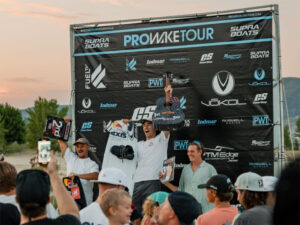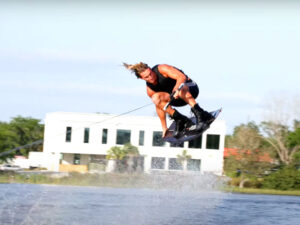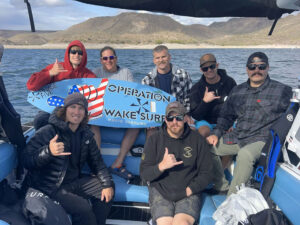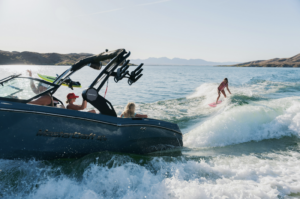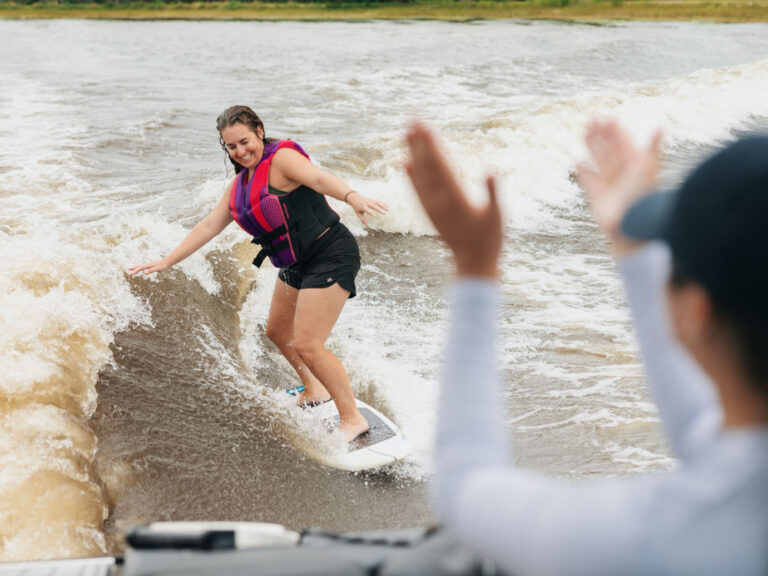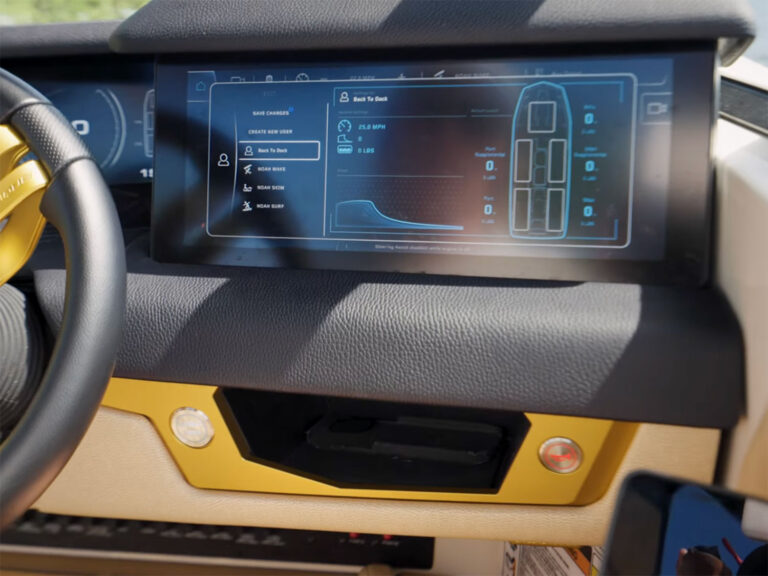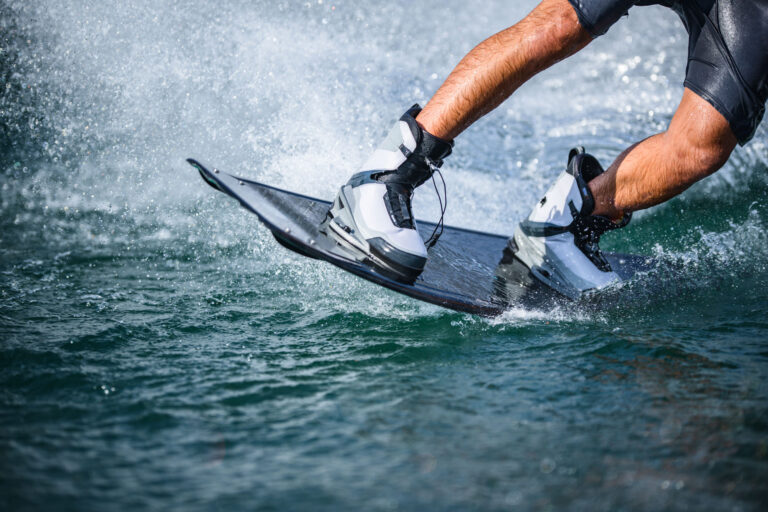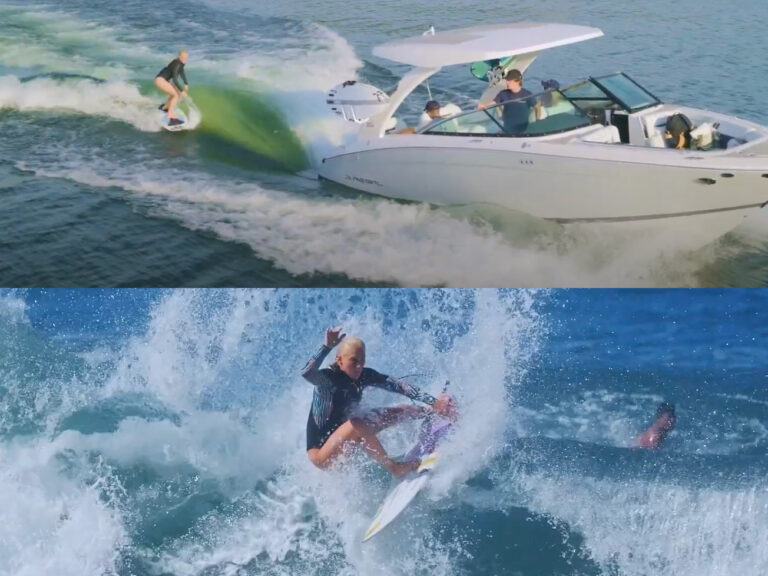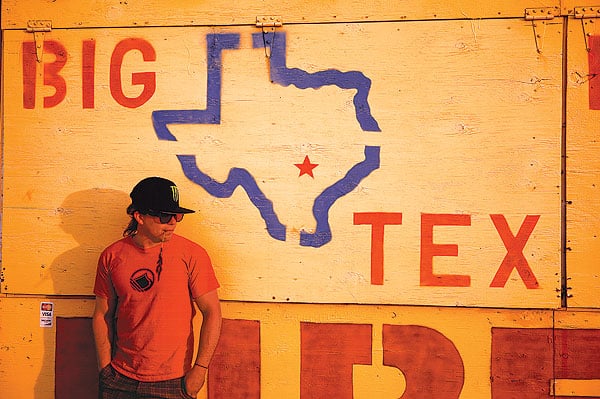
Words: Luke Woodling | Photos: Aaron Reed, BOK and Lu Le
If cable wakeboarding has a face, it’s the grinning mug of Tom Fooshee. After all, the 26-year-old Texan is the most successful cable rider ever. He has won the Wake Park World Series three times in its three-year history, and when TransWorld WAKEBOARDING added Best Wake Park Rider to the Wake Awards last year, Fooshee was named its first recipient. It was fitting, especially since Fooshee’s riding both in and out of the park helped legitimize cable wakeboarding. In fact, more than any other rider, Fooshee helped transform cable riding from the redheaded stepchild of wake riding to one of the most exciting aspects of modern wakeboarding.
Yet despite all of his success, Fooshee still identifies with his college-age self, the Texas State student who spent almost every waking moment either riding or working at the Texas Ski Ranch. He demonstrates that humble commitment nearly every day, whether he’s helping organize grassroots events at TSR or passing out tips to first-time riders on Liquid Force’s Free for All tour. His tireless support of the sport, combined with the world’s most progressive park riding, make him not only one of the sport’s best all-around riders but also one of its most important. After all, if cable parks represent the sport’s best opportunity for growth, Fooshee might just be wakeboarding’s most powerful proponent.
How did you start riding?
The first time I got on a wakeboard was when the Flight 69 came out and I immediately fell in love with it. So we’re looking at about ’94. I got into it because my parents were always on the water and they had a buddy who brought it out and I rode it behind a ProStar. I just fell in love with it from then on.
How long before you picked up cable?
I rode behind a boat until I was about 19 or 20. I actually got a sponsorship from the Texas Ski Ranch to ride on its pro boat team and that included a pass to the cable. Once I started taking advantage of that, I fell in love with it. I rode both boat and cable from then on, and that is what’s gotten me to where I am today.
How close did you live to TSR?
When I was at Texas State, I was only about 10 minutes away. I took total advantage of the park being so close, and I even got a job there. I started in the board shop, then I ran the cable. I ran the rental room. I gave lessons. I just did anything I could while I was in college to ride and make a little money while I was doing it.
Why did you gravitate to the cable?
I was able to maximize my riding time. I would show up at TSR and shred for two or three hours at a time, then we’d go drop the boat in the lake that’s five minutes away and do that for a bit. I was able to ride all the time and try new things all the time without it costing much. It was just nonstop. On cable, you could try something — even just by yourself — for hours at a time. That definitely led to my progression. Another thing that really helped me progress was all the guys at the cable. There are so many people to ride with and people to stay on you to try new stuff. When you constantly have people pushing you, next thing you know you’re doing new things.
Who inspired you?
Gabe Lucas was there all the time, opening up my riding to a lot of new ideas. There was a cable operator there at the time named Josh Wright who really pushed me and got me to try all sorts of new tricks. My old roommate and still one of my best friends, Bret Little, was always hitting me up to ride with him. Although we were technically doing two different things, we were still pushing each other. It’s been pretty awesome not only to see my progression but to the see the progression of these other guys who I’ve been riding with and how well they’ve turned out.
Who inspired you outside of TSR?
Obviously, Parks Bonifay. That dude was always doing things and still is doing things that changed everything. He’s a dude who I think everyone looks up to. I’ve always had mad amounts of respect for Ben Greenwood too, especially how he concentrates on doing everything right and making it look good. It was always super motivating to watch those guys ride in videos and then take that inspiration to my own riding.
What do you like about riding cable and what do you like about riding the wake?
What I like about riding both is that because they’re different I’m able to keep things fresh, and I never get bored. The thing I like most about cable is the social aspect. You’re going out and riding alongside multiple buddies, and that’s not only more fun but it also helps you progress. You can go out there and jam with 10 of your buddies and everybody gets an equal amount of time on the water. Going out on the lake on a boat just never gets old. That’s how wakeboarding got started, and it will never get stale.
Do you think you’re a better cable rider because you ride the wake and vice versa?
Definitely. It makes learning new things a lot faster. I can learn tricks on the cable so much faster because I can try it so many more times and then it doesn’t take me nearly as long to learn it behind the boat.
When you first started getting recognized, it was for cable. Have you ever felt like you had something to prove when it comes to riding the wake?
In the beginning, I did. I felt like I needed to prove I wasn’t just a cable rat. It was always something I wanted to show I could do, and I definitely had a little bit of a chip on my shoulder. This was when cable just started to take off. I feel like that helped the sport as a whole because it showed that doing one can make you a lot better at the other. I think it worked out for the best that I did have that chip on my shoulder at the time because it helped show that doing one can make you better at the other. Now I feel pretty comfortable with it.
Along those same lines, do you think cable riders are getting more respect these days than they did five years ago?
Most definitely. A lot of guys who made their names behind the boat are recognizing the potential of cable, and they’re giving out that respect. It’s definitely getting a lot more respect on the national and global level.
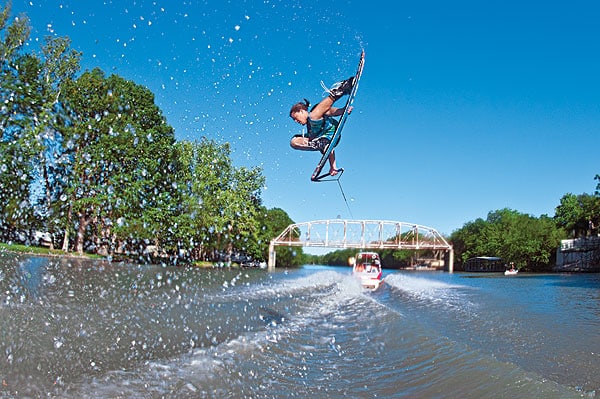
You got sixth at the Brostock double-up contest last year. Is that a place you’re looking to grow your riding?
It’s definitely one of my favorite things to do. I started to get really into double-ups about three or four years ago. It’s definitely one aspect of my riding I want to continue to work on.
What other directions are you taking your riding?
I’m just really trying to open up and learn new things. One of the things I’ve always had a lot of respect for and I want to continue to get more into is winching. It doesn’t get more raw than that, and I have all the elements within five to 10 miles of my house. There’s no reason I shouldn’t be taking advantage of it.
In terms of tricks, what are you working on?
I’ve been working on some new mobes, some new corked 7 variations. I think a 1260 is going to happen pretty soon on the cable. I’ve been trying those and I almost stuck one at Cablestock. That’s something I would definitely like to get this year.
You won Best Wake Park Rider at the 2010 Wake Awards. What was it like to be the first rider to win that award?
Ever since I got into wakeboarding, I’ve been a fan of the Wake Awards. It’s one of the most fun things to be a part of and to watch. To be honored by the wake community in that aspect is just an unreal feeling.
Which other cable guys are you pumped on right now?
Daniel Grant, hands down. He is a kid everybody needs to know about. He’s 14 years old and he’s already starting to do things that are completely unheard of. It’s unreal what that kid can do and what his potential is. The wild thing about it is he’s just as good wakeskating as he is wakeboarding. I would pretty much describe him as the Harley Clifford of cable. He’s pushing the limits right now — doing things that we always thought were impossible. He’s laying them down and making them look easy.
You’d be hard-pressed to find a scene with more momentum than Texas. There are, what, three new parks opening in Texas this summer?
Yeah, Wake Nation just opened up in Houston, Cowtown in Dallas is opening up soon and Hydrous is opening in Dallas this summer as well, so the scene is popping off real hard right now. And it’s popping on every single level too — not just these cable parks. The boat scene is just going off and the winch scene is unreal, especially since Aaron Reed got here. A big reason I stayed in Texas instead of moving to Orlando after I graduated college was the realization that we really have it all here.
How do you think growing up in Texas defined your riding?
It’s definitely affected my style. We were one of the first parks other than Orlando Watersports Complex to really have a rail-savvy park and that really influenced my riding, showing it’s not just about doing air tricks. As far as things are going now, I definitely want to keep that up and just do a lot more grabs. I think that’s one of the only aspects a lot of guys are missing out on right now because it’s getting so technical. One thing I definitely want to push is the legitimacy of cable riding. We’re the ones who have to be responsible for setting the scene and guiding the next generation to do things right.
Do you feel a sense of responsibility for the Texas scene?
I definitely do. It was obviously those guys back in the day like Jimmy Redmon and Pat McElhinney who kicked it off. But we have really been a part of turning Texas up, and having the cable there has helped us get more and more people into the sport.
How involved are you at TSR these days?
I’m extremely involved at TSR. I have to give those guys credit for getting me kick-started, and that place has helped me grow both with myself and my riding. I help them run every single event they have, whether it be judging, organizing or just everything in general. I know every single one of the local kids who come out and ride, and I’m always trying to push them. I’m one of the locals, just like everyone else.
Is that something you’re as proud of as, say, winning the Wake Park World Series?
Definitely, and that’s something I always want to continue to do. It’s part of helping to build the sport. I was just another college kid who rode out there and worked out there, and that’s what I’m going to continue to be. That’s why I welcome anyone and everyone to approach me and ask me for suggestions, trick tips, whatever, and I’ll be the first one to help you out with a smile on my face.
What do you want to do when your pro riding career is over?
I went to school to be a teacher, and that’s always been a backup plan, but I 100 percent want to stay involved in wakeboarding. More than anything, I want to work up at the Texas Ski Ranch and one day take over and run that park. I’ve been there for a long time and I have a pretty good vision for what it takes to run a park like that. I’m definitely going to try and ride out my knees as long as I can, though.
What do you want to accomplish before you’re done riding?
I basically want to stay on the same track I am now. I want to continue submitting tricks for Move of the Year at the Wake Awards. Obviously, I also want to stay very present in the contest scene. Overall, I want to keep pushing the envelope of the sport. It’s still really young compared to a lot of other sports, so there’s still a lot that can be done. I just want to continue to be a part of it and obviously help it grow.
Top 5 Places to Ride
1. Cairns, Australia – Gabe Lucas, Shawn Watson, Sam Collins and I rode behind a 300-foot yacht on the Great Barrier Reef.
2. Thai Wake Park – It’s the best cable park in the world. It has a ton of the freshest obstacles, a perfectly designed lake and the pop on the cable is unreal.
3. Texas Ski Ranch/Lake Dunlap – It’s home.
4. Langenfeld Cable Park – It’s the mecca of cable wakeboarding. It’s the place to go if you’re in Germany, the country of cables.
5. Wake Lab in Arizona – That event at that time was amazing. It was one of the most fun obstacles I’ve ever hit.
Top 5 Things to Do at a Cable Park
1. Dedicate yourself to learning something new You can try things so many more times, so it’s the perfect opportunity to learn a new trick.
2. Try anything and everything Just because you wakeboard doesn’t mean you can’t wakeskate too.
3. Learn how to do half-loads You pop off the water and go 5, 6, 7 feet in the air and go 30 to 40 feet in distance. It’s a fresh, fun thing to do.
4. Meet someone new to ride with Surround yourself with people who are not just fun to ride with but who push you as well.
5. Explore every aspect If you’re into rails, learn how to do a flat-water trick. If you’re into flat-water tricks, learn how to hit rails or kickers.
